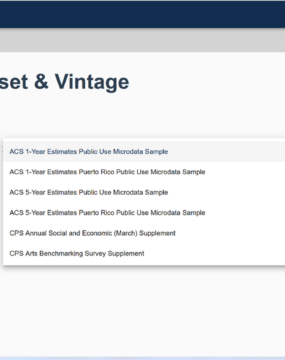Welcome to our blog
Keep up with our latest demographic insights

Achieving a complete and accurate count in the U.S. Census is not simple. The biggest challenge in conducting the census is getting households to mail back or complete their forms online or by phone, a process known as self-response. Higher self-response rates reduce the overall costs of conducting the census. And, when individuals self-respond, the data is more accurate. Before the 2020 Census, Carolina Demography partnered with the NC Counts Coalition to create a map…

The 2022 Population Estimates show that the population of North Carolina grew by 1.3% between July 1st 2021 and July 1st 2022. Among North Carolina’s 100 counties, 74 experienced population growth. The majority of counties grew from people moving in (migration) rather than from having more births than deaths, which is what demographers call natural increase. 74 counties grew between July 2021 and July 2022 North Carolina overall grew by an estimated 1.3% between July…

The U.S. Census Bureau released their 2022 population estimates for municipalities earlier this month. Here’s what the new data tell us about how North Carolina’s cities and towns have changed in the past year. Greensboro passes 300K residents On July 1st 2022, Greensboro’s estimated population was 301,115, up from an estimated 299,225 on July 1st 2021. Wake Forest also passed a major milestone, passing 50,000 residents as of 2022 (as predicted in our blog post…

Dr. Michael Cline is the state demographer for North Carolina at the Office of State Budget and Management and has given us permission to re-post his content here. On May 25, 2023, the US Census Bureau published the Demographic Profile and Demographic and Housing Characteristic (DHC) datasets for the 2020 Census. These datasets provide a more expansive picture of the population counted in the 2020 Census than the 2020 Census data published to date. From…

In January, we posted a blog by Dr. Mike Cline, the NC State Demographer, “Making Sense of the New ‘Urban Area’ Definitions” in which he addressed the changes to how the Census Bureau defines urban areas. This post details the implications of the definition changes and the changing urban-rural composition of North Carolina’s population in general. First, what do urban and rural mean? To recap, before 2020, the Census Bureau’s definition of urban was based…

Today the US Census Bureau released 2022 population estimates for Metropolitan/Micropolitan Statistical Areas, incorporated cities and towns, and subcounty areas. These are annual population estimates based on the last decennial census and not actual 2020 Census counts. The annual Census estimates should not be confused with certified annual population estimates produced by the State Demographer of North Carolina which will be released later this year The press kit and data from today's release are available…

It’s hard to access Census microdata (individual survey responses) without specialized tools or software. But a new tool from the Census Bureau, the Microdata Access Tool (MDAT) makes it easy to create custom tables and statistics that may not be available on data.census.gov in the standard tables. In this blog post, I walk you through when and how to use the MDAT tool, available through data.census.gov. The Census Bureau also has an excellent video tutorial…

Dr. Michael Cline is the state demographer for North Carolina at the Office of State Budget and Management and has given us permission to re-post his content here. “We are a safe space where young people and families can be accepted and celebrated for who they are. It’s a safe space to be bilingual, bicultural, and to be yourself.” That is ISLA Executive Director Lwiza Escobar Garcia describing the role her organization plays in the…

From WoW Supermarket in Monroe, to Tienda Mi Pueblo in Durham; from Dirtbag Ales in Hope Mills to Tienda Los Nenes in Asheville; from Pura Vida Worldy Art in Charlotte to Diamante Arts & Cultural Center in Cary. The evidence of Hispanic population’s growth and cultural influence can be found across North Carolina. The Hispanic population in the state hasn’t just grown in the last three decades. Where the Hispanic population lives in North Carolina…

Dr. Michael Cline is the state demographer for North Carolina at the Office of State Budget and Management and has given us permission to re-post his content here. In 1989 a young couple moved to Greenville from Puerto Rico. Like many other young families who relocated to North Carolina, they were pursuing opportunity. The husband was embarking on his career (engineering), as his wife stayed home with their young daughter. Their daughter was soon joined…
Your support is critical to our mission of measuring, understanding, and predicting population change and its impact. Donate to Carolina Demography today.